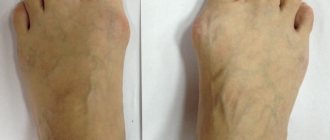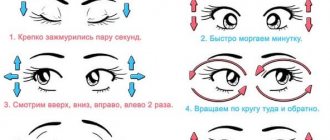Among sexual disorders, one of the most common is anorgasmia.
This pathology is characterized by a complete absence of orgasmic sensations during sexual intercourse. Treatment of anorgasmia is a long-term process, during which psychotherapy plays an important role. This is due to the fact that this disease is only in rare cases caused by organic pathology or congenital anomaly. Most often, the lack of orgasm is explained by psychological problems and stress.
Fighting anorgasmia
Enjoying sexual contact is an integral part of a positive mood and well-being. But due to some factors, the desired orgasm may not occur. This deviation is associated with anorgasmia - a deviation in the psychological part of intimate life. Often this symptom leads to discord and quarrels in a couple. Therefore, it is important to begin treatment for anorgasmia after the first symptoms. Read below to learn how to identify the disease in the early stages and bring bright colors back into your relationship.
Frequently asked questions about the treatment of anorgasmia
Is there a cure for absolute anorgasmia?
Almost any type of psychogenic anorgasmia can be effectively treated. Diagnostics and an integrated approach to therapy, as well as the professionalism of the doctor, are of decisive importance. You can undergo treatment for anorgasmia in Moscow in our clinic.
Is postpartum anorgasmia normal?
Yes, to some extent. For several weeks after childbirth, intimate life is prohibited, and subsequently returning to sexual relations may be accompanied by fears (for example, fear of pain). Physiological changes, stretching of the vaginal walls, fatigue associated with caring for a baby - all this can affect the quality of intimate life. It is important to contact a specialist to solve the problem.
Mechanism of development of anorgasmia
The logical conclusion of every sexual act is orgasm. But if it does not occur, then anorgasmia may develop. This disorder occurs in many people, and equally often in representatives of the strong and weak half of humanity. The scientific definition of anorgasmia is as follows: it is a disorder in sexual life in which the partner cannot reach the highest point of pleasure.
Two concepts are often confused: anorgasmia and frigidity. It is important to note that there is a significant difference between them. After all, if the first problem involves the absence of orgasm, but the preservation of attraction, passion, as well as the sensitivity of the erogenous zones, then in the second case the person loses interest in sexual life. Sometimes there is even disgust.
Interesting: Ancient Indian and ancient Chinese philosophers were sure that orgasm of both partners is the key to the harmonious development of relationships.
In order to develop a treatment algorithm and ways to prevent the disease, it is necessary to determine a number of factors that provoke the appearance of deviations.
Risk factors
What to do if you don’t want further complications of frigidity, what should you do? In order for a person to fully develop, not only sexually, a healthy environment in relationships, in the family and good health is necessary. Unfortunately, these factors do not always add up together.
- If a partner had the imprudence to ridicule another or regularly insults him, this provokes the development of complexes and closedness. Which may well lead to frigidity in women.
- Also, if a partner forces another to have sex with him or her, the other will feel disgust at the mere thought of sexual intercourse.
- Chronic diseases that provoke disturbances in the functioning of the endocrine system can cause frigidity.
Symptoms of anorgasmia
The first and most important symptom of anorgasmia is the absence of orgasm. The blood that has entered the pelvic organs in large quantities slowly spreads throughout the body, while when the reproductive and psychological systems are functioning properly, a sharp release of hormones occurs. But this is not the only signal. There are often accompanying symptoms that manifest themselves together with the absence of orgasm.
- Due to regular dissatisfaction, a person completely loses interest in intimate relationships.
- Erogenous zones become less sensitive.
- Passion and desire remain, while outward excitement does not manifest itself.
Attention: Often a symptom of anorgasmia can be stress or neurosis.
Conditions for effective treatment of anorgasmia
There are several conditions for effective treatment of anorgasmia:
- comprehensive diagnostics: the primary measure is to assess the function of the reproductive system. A woman should contact a gynecologist or gynecologist-endocrinologist, a man should contact a urologist or andrologist. A good psychiatrist or psychotherapist will begin treating a sexual disorder only after making sure that there are no physical or physiological pathologies;
- trusting relationship with your doctor: lack of orgasm and any sexual dysfunction is a sensitive topic, and it is important to be frank with your doctor, provide him with the full picture in order to receive adequate recommendations. Choose a specialist you can trust;
- reliable clinic: highly qualified doctor, confidentiality and anonymity of treatment, modern equipment that allows accurate diagnosis and implementation of modern treatment methods.
Anorgasmia comes in different forms
Anorgasmia in women manifests itself on an individual basis: the type of pathology, the speed of development and how strongly the deviation manifests itself have become characteristics for creating classifications. Thus, sexologists distinguish several types of anorgasmia.
- Total (absolute). Characterized by the absence of orgasm during any sexual activity. Masturbation, caresses from a partner, or intimate fantasies do not bring pleasure or cause arousal.
- Partial anorgasmia (partial). A person achieves vivid sensations in the process of self-satisfaction or erotic dreams. There is no orgasm when the partner stimulates the erogenous zones or during sexual intercourse.
- Relative. Orgasm is experienced during the fulfillment of certain sexual fantasies, such as role-playing games or with a specific partner. Often the highest pleasure occurs in a public place where the couple can be noticed.
As for how anorgasmia manifests itself, there are three stages. each of them is characterized by a specific flow.
- Stage 1 – pleasant sensations, but nothing more. During sexual intercourse, a woman/man feels pleasant sensations, but cannot achieve orgasm.
- Stage 2 – partial lack of desire. Due to constant dissatisfaction, a person does not have vivid emotions, and intimate intimacy becomes uninteresting. As a result, there is no excitement.
- Stage 3 – avoidance. During sexual contact, one of the partners feels psychological burden and negative emotions.
Important: Anorgasmia in men is less common than in the fair sex.
In order to correctly determine how to treat anorgasmia, you should understand the cause of the deviation.
Female sexual dysfunction. Frigidity. Anorgasmia. Dyspareunia. Vaginismus.
Various diseases are also possible frequent sources of direct or indirect sexual problems. For example: diabetes mellitus or vascular diseases can affect adequate arousal. Cardiovascular diseases associated with shortness of breath can limit sexual relations. Diseases such as arthritis or urinary incontinence cause discomfort and difficulty during sexual intercourse, thereby leading to dysfunction and decreased sexual activity. Gynecological conditions associated with a woman's reproductive life (puberty, pregnancy, menopause) are potential obstacles to a woman's sexual life. Therefore, each patient should be examined by a gynecologist to exclude gynecological pathology.
Frigidity
– sexual coldness of a woman. This is a condition in which a woman, even in the most favorable conditions, does not feel sexual attraction and arousal. Never feels unsatisfied. Sometimes such desire disorders are associated with boredom and routine in sexual relationships. So, frigidity can be divided into: temporary and permanent, as well as primary and secondary.
Primary frigidity
– observed in patients from the very beginning of sexual activity, when the woman is not sexually awakened.
Secondary frigidity
- a state of sudden or gradual disappearance of libido in a woman, as a rule, when the cause or influencing factors are eliminated, libido is restored.
Retardation frigidity
– delay in pubertal and psychosexual development, attraction in such people stops at the erotic or platonic stages, the absence of orgasm is combined with satisfaction on an emotional level without attraction to sexual intercourse.
Anorgasmia
– violations of orgasm or its absence, occurs more often than frigidity, mainly in women, since male orgasm is associated with the process of ejaculation. In some cases, anorgasmia can be combined with a decrease in sexual desire or its complete absence. Anorgastic women experience sexual desire, but do not achieve orgasm and remain unsatisfied. This condition can be caused by both sexual inexperience and lack of arousal. For example: when a woman has never experienced an orgasm in her life or a psychological factor (“unintentional inhibition of orgasm”) or a condition caused by a long-term chronic illness. Psychogenic factors: insufficient psycho-emotional preparation of a woman for sexual intercourse, rape or rough sexual intercourse (during defloration), fear of pregnancy. A poorly chosen position during sexual intercourse (especially if the penis is of insufficient size) or interrupted sexual intercourse (for example: premature ejaculation in a man) can also cause disharmony between partners. Men often use a woman as a tool for their own gratification. But in many ways, a woman’s satisfaction during sexual intercourse depends on the correct actions of the man, who usually sets the rhythm, posture and the very nature of sexual intercourse; often the man is so carried away with himself that he forgets about stimulating the erogenous zones of his partner, as a result she does not experience an orgasm.
With a long absence of orgasm, sexual desire itself usually fades away. The incidence of anorgasmia depends on age and duration of regular sexual activity. For many women, their first orgasm occurs only after childbirth, and for most, after 10-15 years of regular sexual activity. As a result, up to 90% of neuroses in women are associated with their sexual dissatisfaction. Lack of orgasm during sexual intercourse is usually caused by factors such as anxiety, lack of emotional intimacy between partners, mistrust, and low self-esteem.
THUS THERE IS:
Relative anorgasmia
– in which the possibility of orgasm is extremely rare.
Absolute anorgasmia
– when orgasm does not occur under any circumstances.
Primary anorgasmia
– the phenomenon of the absence of orgasm at the beginning of a woman’s sexual life.
Secondary anorgasmia
– loss of orgasm after a certain period of normal sexual life. It can occur when changing sexual partners, or after a long period of abstinence.
According to the severity of anorgasmia, there are: 1) a woman does not have an orgasm, but sexual intercourse is accompanied by pleasant sensations of excitement, the secretion of the gonads is released; 2) sexual intercourse is indifferent, there are no pleasant sensations; 3) sexual intercourse is unpleasant and disgusting.
When treating anorgasmia, the prognosis largely depends on the willingness of both partners to change the existing stereotype of sexual intimacy.
Dyspareunia
– painful sexual intercourse (the general name for sexual disorders in women). Genital pain before, during (in the process) or after sexual intercourse. The most common causes may be associated with the presence of infections, inflammatory processes, lack of vaginal hydration, abnormal development of the genital organs, damage or injury to the ligamentous apparatus of the uterus, as well as internal or external genital organs, conditions after gynecological operations. Contributing factors are the lack of love and trust in the partner, neurotic and somatic diseases. Such women rarely experience orgasm during sexual intercourse and most often remain dissatisfied, feeling irritated and negative about themselves and their partner. With long-term dyspareunia, there is a decrease or loss of interest in sexual intercourse.
THREE TYPES OF PAIN ARE POSSIBLE: 1) SUPERFICIAL; 2) VAGINAL; 3) DEEP.
Superficial dyspareunia
– pain that occurs when trying to initiate sexual intercourse.
Vaginal dyspareunia
– pain that occurs during friction during sexual intercourse (lubrication problems and impaired arousal).
Deep dyspareunia
– pain associated with pushing during sexual intercourse (often caused by various diseases).
Vaginismus
- this is an unintentional (unconscious), convulsive contraction of the muscles surrounding the entrance to the vagina, when attempting to perform sexual intercourse. An involuntary vaginal reflex - a spasm of the smooth muscles of the outer third of the vagina can be caused either by an attempt at sexual intercourse (the entrance or approach of the penis to the vagina), or by an attempt to penetrate other objects, for example the fingers of a gynecologist or even a woman’s own hands. Muscle contraction occurs, spasm makes it almost impossible to perform sexual intercourse, severe pain occurs, the partner cannot penetrate the vagina through such a compressed hole, and repeated attempts give the effect of pain and discomfort feedback, the already existing conditioned reflex is strengthened (the woman’s body tries to protect itself from painful impact, responding with even stronger muscle tension).
Consciously, it is very difficult for a woman to accept her husband; she simply cannot control this process, and an excited man faces a “brick wall” that cannot be overcome. After stopping attempts to insert the object, the muscles return to normal tone. Therefore, women with these problems begin to doubt whether they even have an entrance to the vagina, because with spasms of the vaginal muscles, sex is incredibly difficult, it seems that there is no entrance to the vagina.
The pubococcygeus muscle surrounds the vaginal opening and anal area. This is a very powerful muscle group that plays a key role in the female reproductive system, is involved in urination and defecation, as well as in sexual intercourse.
Vaginismus affects hundreds of women who are doomed to loneliness. Often the accompanying problems of such women are anxiety, isolation, tension, and the emergence of disagreements in marriage.
Patients complain that they cannot have sex, sex is incredibly painful and virtually impossible, it seems to them that their vagina is small and any attempt to push the penis into the vagina causes acute pain. Women suffering from vaginismus are sexual and sensitive, but do not have the opportunity to lead an active, full sex life.
Factors contributing to the development of vaginismus: sexual abuse, painful sensations during the first attempts at sexual activity, strict religious upbringing in the family, sexual fears, psychological trauma in the past and other reasons.
Primary vaginismus
– occurs from the first attempts at sexual activity; a woman always experiences pain and discomfort during sexual intercourse.
Secondary vaginismus
– the woman had painless sexual intercourse in the past, vaginismus developed later, due to some reason.
Along with these disorders, there is also hypersexual syndrome, as one of the forms of sexual disorders, this is a sharp increase in libido (increased sexual desire). A group of people with an extremely strong sex drive, but who rarely experience complete sexual satisfaction despite an active sex life. Thus, hypersexuality in women is designated by the term nymphomania, and in men satyriasis.
SIGNS OF HYPERSEXUAL SYNDROME:
1) an insatiable need for sexual intimacy, disrupting everyday life 2) sexual life devoid of an emotional component 3) sexual intimacy does not bring satisfaction, despite the presence of orgasm.
Psychological causes of anorgasmia
Lack of orgasm during sexual intercourse is a polyetiological disorder that depends on many reasons. However, sexologists, gynecologists and psychologists agree that most often the provoking factor is psychological deviation.
- Disharmony in relationships. If a partner does not pay enough attention to each other, or scandals or conflicts are a common occurrence in a couple, sooner or later one of the partners may develop anorgasmia.
- Heavy workload. People who have an irregular work schedule, are confident in their careers and are very worried about work issues, often face the problem of lack of orgasm. This can be explained this way: consciousness is constantly in a tense state and is not capable of rapid relaxation.
- Self-esteem problems and fear. This usually manifests itself in those who have had an unpleasant experience of intimacy. In such cases, the person constantly feels “not like that” and blames himself for the problems with the couple’s intimate life. Because of this, there is a fear of disappointment.
- Complexes. Childhood grievances over a figure, facial features or behavior often lead to the fact that a woman cannot trust her partner and feel herself. The result is dissatisfaction on a psychological level.
- Pregnancy. Girls and men who are not planning a pregnancy in the near future often do not achieve orgasm due to the fear of unplanned fertilization.
Anorgasmia can also be the result of severe shock or psychological trauma that is not related to intimate life or personal complexes. For example, after experiencing a car accident, the death of a loved one, etc. a person often stops enjoying sexual life.
Myths and dangerous misconceptions in the treatment of frigidity
- True frigidity manifests itself as a complete lack of interest in sexual life. If a girl temporarily experiences inconvenience or is disappointed in her partner, this does not mean that she is frigid.
- Often, frigidity in men hides its “imaginary” manifestation in the form of psychological problems. They arise due to stress, shock, and psychological trauma. After working through them with a psychologist, the problems disappear.
- Also, frigidity in women is often resolved after a couple of conversations with a sexologist. The couple simply does not discuss their preferences.
Other causes of anorgasmia
Anorgasmia has other causes of development that are directly related to the work and anatomy of the reproductive system. Lack of orgasm is often observed in women.
- Problems with the hormonal system. Due to an imbalance, the functioning of internal organs can be restructured, as a result of which the reproductive system does not function properly.
- Painful sensations during sex. If intimacy is accompanied by any physical discomfort, the highest degree of pleasure may not occur, since the person cannot completely relax.
- Pregnancy and breastfeeding. The period of gestation and feeding is often characterized by decreased sensitivity of erogenous zones. A sharp release of hormones at this time may also be marked by a decrease in desire.
- The partner's orgasm is coming soon. Due to the rapid ejaculation of a man, a woman cannot achieve orgasm.
- Incorrect contraception. Some women do not achieve pleasure due to the presence of a condom.
- Diseases of the genitourinary system, pathologies, structural features. Inflammatory processes in the vagina and the size of the male/female genital organs also affect orgasm.
- Wrong choice of poses. Some positions do not bring, and it becomes impossible to achieve orgasm: limbs cramp, excessive friction is felt, or incomplete penetration occurs.
Complications
Lack of sex life and fear of a partner and sex can lead to depression. A person is in a depressed state, completely at the mercy of his own illness. The absence of a partner leads to loneliness if the problem is not identified in time. This also negatively affects the human psyche.
Hormonal imbalance, which often accompanies the disease, can lead to:
- infertility;
- uterine fibroids;
- the formation of a malignant tumor;
- polycystic ovary syndrome.
You cannot take your own health lightly, even if there is no need to have a sexual partner. Problems associated with frigidity in women can seriously ruin life.
Diagnostic methods
The diagnostic conclusion is drawn up based on a number of studies. Diagnostics is carried out according to the following algorithm:
- Contacting a sex therapist and receiving a referral for examination from a specialized doctor: a gynecologist or urologist.
- Gynecological examination on a chair and collection of material for analysis.
- Examination using ultrasound technology to identify deformations and pathologies of the structure of the organs of the reproductive system.
- Conversation with a psychologist or sex therapist. The doctor performs several techniques that reveal the degree of interest in sexual intercourse and possible problems at the psychological level.
Attention: To solve the problem of getting an orgasm faster and more effectively, it is recommended to visit a doctor for both partners.
Preparing for a conversation with a psychotherapist or psychologist
Many people are embarrassed to talk to strangers about their intimate problems; sometimes a silent ban on discussion exists even between sexual partners. This is a completely wrong approach; perhaps a timely consultation with a psychologist will save the marriage, and even if it does not return orgasm, it will help you find harmony with yourself and with your beloved man.
To make communication easier and not forget anything out of embarrassment, you can use a notepad and write down everything that you consider important. It is first recommended to visit a gynecologist to rule out pathologies in the female genital organs and take hormonal tests.
Write a list of all the medications you have taken over the past six months.
It’s better to go to your first appointment with a sex therapist alone, and for repeat consultations, the presence of your other half is even welcome.
What will the conversation with a psychologist (psychotherapist) be about in the absence of orgasm?
You can ask the doctor any question, do not hesitate to clarify what is important to you. The most frequently asked questions are:
1. What was the reason for the lack of orgasm? 2. What treatment regimen will be used? 3. What side effects do the drugs have? 4. What results can you expect from the treatment of anorgasmia? 5. What can you do on your own to return (experience) orgasm? 6. Should the partner be involved in the treatment of anorgasmia? 7. Do you need additional treatment from a psychotherapist or psychologist? 8. What self-study materials are recommended for my problem?
In turn, be prepared to answer many intimate questions from the doctor, this is necessary to determine the cause of anorgasmia.
When did you start having sex? How many sexual partners did you have? Do you have erotic dreams? Have you ever experienced a feeling of release during sexual activity with your current partner? With others? During sleep? What are the circumstances of your orgasm? How long have you had problems experiencing orgasm? Does your partner turn you on? What negative memories do you have from your sex life? Have you experienced psychological trauma in the sexual sphere? What methods of contraception do you use? What is your relationship like as a couple? What bad habits do you have? What medications are you taking and for what? Do you discuss sex life with your mother, what sexual beliefs have you acquired from your family?
Possible consequences
If anorgasmia is not diagnosed in a timely manner, there is a risk that the problem will develop into more serious pathologies.
- At the emotional level, neuroses and depression develop.
- Fibroids, inflammatory processes and pathologies of the organs responsible for urination may appear.
In addition, nervous tension due to the constant dissatisfaction of one of the partners often leads to constant scandals occurring in the couple. In some cases, it comes to breaking the relationship.
The main reasons to choose us
- Guaranteed effect. You will get the result you expect.
- European level of treatment. Equipment, tools, personnel qualifications, appointment protocols comply with international standards.
- No queues. We plan appointment times wisely to avoid time conflicts.
- Personal observation scheme. There are no standard treatment options for anorgasmia; your doctor will create an individual program that is right for you.
- No scars or scars. Aesthetic surgeries do not leave marks on the skin.
Our specialists will delicately and effectively relieve you of anorgasmia. There is no need to doubt, be embarrassed or put off solving an important problem. We are waiting for you, you are always welcome!
Treatment of pathology
Since anorgasmia manifests itself individually, medications and other methods of therapy are selected individually. Prescribing treatment begins with identifying the cause. To do this, a set of diagnostic measures is carried out, on the basis of which a conclusion is made about what factor provoked the violation. Conventionally, therapy methods are divided into three groups.
- Methods offered by traditional medicine. The category includes medications, the action of which is usually aimed at eliminating inflammatory processes in the reproductive system. Also, a person experiencing anorgasmia is usually prescribed vitamin complexes, and sometimes sedatives. In addition, electrical, hydro and vibration stimulation are often used.
- Visit to a psychologist. Even if the reason for the lack of pleasure lies in anatomical features, or is provoked by a pathology of the genital organs, the patient is recommended to undergo a course of treatment from a psychologist or psychotherapist in order to relieve moral and emotional stress. Usually, not just one partner, but a couple, is enrolled in such procedures in order to improve relationships.
- Unconventional methods. If stress, neurosis and physiological abnormalities are not detected, perhaps couples yoga or hypnosis will help solve it.
Interesting: To solve the problem, many women are recommended to take various courses on femininity, charisma, etc. In addition, there are classes with an individual instructor on vaginal training, mastering new techniques that promote additional stimulation.
Diet for anorgasmia (lack of orgasm)
Vitamin-protein diet
- Efficiency: 5 kg in 7-10 days
- Terms: up to 14 days
- Cost of products: 1700-1800 rubles. in Week
The key to the successful functioning of all organs and systems of the body is a complete balanced diet, a sufficient level of physical activity and hobbies, as well as healthy sleep and a favorable psychological environment. But people have long been looking for a list of products and substances that will help make their sex life brighter and orgasm more intense. These products are considered to be:
- freshly squeezed orange or other citrus juice;
- nuts and cold-pressed olive oil;
- various berries - raspberries, strawberries, blueberries and even watermelons;
- herbs, spices, hot peppers, garlic, onions and spices;
- chocolate;
- eggs and seafood - everyone knows about the miraculous properties of oysters, shrimp, mussels, scallops and fish.
By reviewing your diet and adding these ingredients to the menu, you will significantly improve your health and take care of the normal functioning of the reproductive system.
Prevention
In many cases, anorgasmia can be prevented by carefully monitoring the psychological, emotional and physiological components of health.
- Maintaining proper hormone balance. This advice is especially relevant for pregnant women and women who have recently given birth. To keep your hormonal levels in order, you need to take vitamins and avoid stress.
- Proper sex. It is important to observe all stages of sexual intimacy: foreplay, sexual intercourse, caresses after sex.
- Harmony in relationships. It is necessary to maintain warmth between partners: talk about sex, have romantic dinners, do something together.
- Masturbation. Self-satisfaction or satisfying a partner with your hands allows you to better know your body and its reactions.
Sexual experience is an important part of the life of every adult. High-quality sexual intercourse inspires, improves mood and improves health. Therefore, anorgasmia is not only an unpleasant symptom, but also a factor that seriously worsens physical and emotional states.
During pregnancy
A gradual decrease in sexual desire in partners during the period of bearing a child is observed in almost all couples and intensifies by the third trimester. A change in the number of sexual contacts may be a consequence of changes in the level of progesterone and prolactin in the blood, toxicosis , anemia , and the risk of miscarriage . They are manifested not only by a decrease in sexual desire and dyspareunia , but also by the ability to arousal, lubrication, achieve orgasm, and satisfaction. An exception may be the second trimester, when emotional adaptation occurs and toxicosis is less disturbing.
You need to understand that the female body undergoes hormonal changes and body restructuring. Not only the shape of the body changes, but also the mood, worries arise about somatic disorders, obstetric features, about the fetus and the safety of the upcoming birth. Moreover, problems in the sexual sphere can be observed for the first six months after childbirth, in connection with urogenital disorders and psychological aspects - fears of changing one’s own attractiveness, negative memories and experienced impressions.
Sources
- Rishard M., Ziyad A., Ranaweera P., Pandithage KCW. Use of Collection Condoms to Retrieve Sperms in a Patient with Idiopathic Anejaculation/Anorgasmia and Infertility. // J Sex Marital Ther - 2021 - Vol47 - N3 - p.305-306; PMID:33263507
- Levine LA., Betcher HK., Ziegelmann MJ., Bajic P. Amphetamine/Dextroamphetamine Salts for Delayed Orgasm and Anorgasmia in Men: A Pilot Study. // Urology - 2021 - Vol142 - NNULL - p.141-145; PMID:32360625
- DiCarlo-Meacham AM., Dengler KL., Snitchler AN., Gruber DD. Clitoral Epidermal Inclusion Cyst Leading to Anorgasmia: A Case Report and Literature Review. // J Pediatr Adolesc Gynecol - 2021 - Vol33 - N3 - p.321-323; PMID:32028052
- Dubowitch E., Khurgin J. Cultural anorgasmia: considerations in the evaluation of male infertility in the Hasidic community. // Can J Urol - 2021 - Vol26 - N4 - p.9864-9866; PMID:31469644
- Kaufman KR., Coluccio M., Linke M., Noonan E., Babalola R., Aziz R. Alprazolam-induced dose-dependent anorgasmia: case analysis. // BJPsych Open - 2021 - Vol4 - N4 - p.274-277; PMID:30083378
- Speir E., Shekhani H., Peters G. Temporary Anorgasmia Following Uterine Artery Embolization for Symptomatic Uterine Fibroids. // Cardiovasc Intervent Radiol - 2021 - Vol40 - N11 - p.1792-1795; PMID:28836027
- Chapa HO., Ramirez A., Dawson D. Etonogestrel contraceptive implant-associated secondary anorgasmia. // Contraception - 2021 - Vol96 - N4 - p.254-256; PMID:28666796
- Calabrò RS., Casella C., Russo M., Naro A., Quattrini F. An uncommon side effect of perampanel: Severe delayed ejaculation with anorgasmia. // Epilepsy Behav - 2021 - Vol72 - NNULL - p.198-199; PMID:28549886
- Calabrò RS., Genovenese C., Militi D., Russo M., Naro A., Bramanti P. Female anorgasmia induced by lacosamide: Rare or neglected side effect? // Epilepsy Behav - 2021 - Vol61 - NNULL - p.88-89; PMID:27337160
- Jenkins LC., Mulhall JP. Delayed orgasm and anorgasmia. // Fertil Steril - 2015 - Vol104 - N5 - p.1082-8; PMID:26439762
Ways to solve the problem
You can get rid of anorgasmia with the help of psychotherapy, which takes into account the personal interests and individual characteristics of partners. Positive dynamics are also achieved through autogenic training. To solve the problem, physiotherapy is widely used: massage, electrical stimulation, water procedures.
The G-spot is invaluable for obtaining orgasmic sensations. This is an area on the front wall of the vagina, located at a distance of several centimeters from the vaginal entrance. Stimulation of the G spot promotes arousal due to a large rush of blood and the rapid achievement of vaginal orgasm. The sensitivity of the clitoris and G-spot can be increased by intimate contouring, the purpose of which is to increase the volume of the sensitive area. After undergoing the procedure, many women experience orgasm for the first time in their lives, become more relaxed and open to further sexual experiments.










